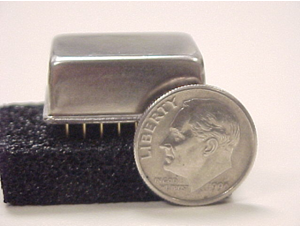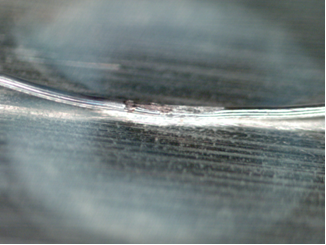
In most every electronic device, there are interconnections that most people never see. For example, in your cell phone there are laser welds, solder joints, and ultrasonic wire bonds. Most of my experience is with wire bonding, resistance welding, and ultrasonic welding. Lately I’ve been working on a lot of soldering applications, too.
The interconnections inside these devices need to be secure, permanent attachments. Sure, the charger or dock for a phone or personal media player has contacts that mate with the device, but if you look closely, they bend a little when plugged in, and allow for the contacts to “scrub” against one another. A thin gold plating also helps to provide a good quality, low electrical resistance joint.
Inside the device, there is no movement amongst the components. A pressure contact would loosen and eventually cause a failure. This is why more permanent welds or solder joints are required.
Laser welds are usually made where a seal weld or many spots have to be made. Although not a consumer product, the device pictured below is a laser-welded electronic package for a telecommunications satellite. This package needs to be sealed permanently with a particular gas inside, in order for the device to operate properly. Laser welding was chosen since it could seal the metal package without over-heating the internal components.
This photo is a microscopic photo of a silver-coated copper wire, about the same diameter as the hair on your head (about 0.004”).
It was welded to a tin-coated copper strip for a solar application. This would have been difficult to laser weld, since targeting a laser beam to the wire would have been a challenge at high speeds. Fixturing the wire with a clamp of some sort is a solution, but this would negate the high-speed, non-contact welding benefits of laser welding. Instead, resistance welding was chosen since it helped to locate and press the wire into the foil, further reducing contact resistance and increasing electrical current conduction.
In most cases, a consideration of the materials to be welded needs to be made. The part geometry is next, followed by the time available for welding. High-capital cost processes, like laser welding, are most effective where hundreds of thousands of welds are to be made, on overlap or seam weld joints.
Next time I’ll get into more details about the various joining processes, and discuss design considerations for each of them.

